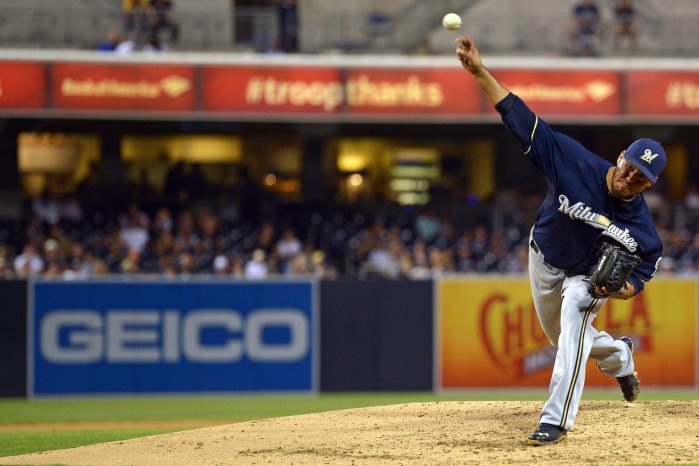Now that the offseason is upon us, I thought it would be entertaining to look back at iconic Baseball Prospectus articles about the Milwaukee Brewers. The BP archives are free for all, which obviously includes non-subscribers, so please follow the link for the remainder of the article. Enjoy.
I spent most of the winter in hibernation, buried within the cozy confines of my baseball-analysis den and wading through a sea of pitchers. I’m happy to say that the seeds of thought that were planted in the final weeks of 2013 are now bearing fruit, as the 2014 Starting Pitcher Guide that Paul Sporer and I produced was released last week and covers close to 400 pitchers throughout the professional ranks. This was my second year contributing mechanical reports to the Guide, and I thoroughly enjoyed the arduous-yet-rewarding process as well as the pitching discussions that were generated as a result (and which can be heard on the latest episode of TINSTAAPP).
I dove quite a bit deeper into the pitcher pool this year, with mechanical report cards for more than 200 players. The total was enough to cover just about every pitcher with a shot at starting for his club come Opening Day, nearly all of the pitching prospects who placed in the upper half of BP’s Top 101 prospect list, plus a batch of 30 relievers to ice the cake. Stacking these players side-by-side for each ball club revealed some stark organizational trends, and though some of these team-wide tendencies were apparent in the past, there were a few new patterns that emerged this time around.
Let’s get the recurring topics from “Trending 101” out of the way first.
To start, the Rays are particularly adept at training their pitchers to have excellent balance and outstanding posture, and this element becomes more apparent as Tampa Bay continues to churn out quality arms from their system. Consider the grades of the five starting pitchers who were covered in the Guide, in which each member of their starting rotation earned a plus grade of “60” or better in the departments of both balance and posture (note that these were finalized prior to the Jeremy Hellickson injury). The grades for the big five averaged out to a 63 for both subjects. On the downside, Rays pitchers tend to combine the awesome balance with a deliberate pace to the plate, with an average momentum grade of just 46 for the five starters. The only pitchers with above-average scores for momentum wereDavid Price and Matt Moore, each of whom scored a modest 55 in the category.
[snip]
I have spoken at great length of the Brewers’ preference toward over-the-top pitchers who sacrifice posture in the name of a high arm slot, and that dictum grows louder even as the faces change within their rotation. The three homegrown mainstays from the 2013 rotation each received a poor grade for posture, including Yovani Gallardo (20), Marco Estrada (30), and Wily Peralta (30). The one bright spot was Kyle Lohse, whose 50-grade posture was the best on the staff last season; significantly, he is not a product of the Brewers’ system. The same can be said for newcomer Matt Garza, but the fact that Garza incorporates heavy spine-tilt to the tune of 35-grade posture (at peak) may very well have been the lure that reeled him to “the good land.” Tyler Thornburg is a product of the Milwaukee farm, and his own propensity for glove-side tilt carries a common bond (i.e. 30-grade) with his future rotation-mates. All told, the six starting pitchers who were given report cards in the 2014 SP Guide received an average posture grade of just 32.5, the lowest such GPA of any club in any single subject.
[Read the remainder of the article by Doug Thorburn right here.]
